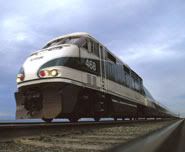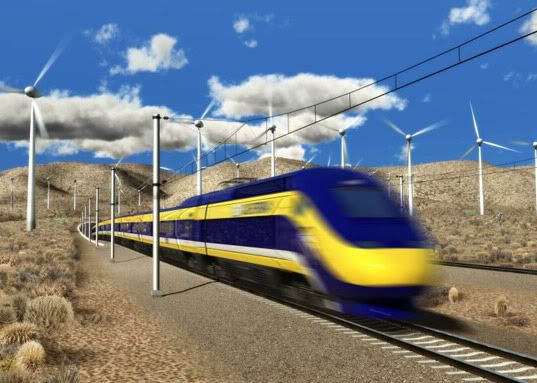cross-posted from Voices on the Square
 I saw on the twitter feeds of some transit/transport bloggers (twitter list) some interesting news about the ongoing All Aboard Florida project for a 3hr rail service between Miami and Orlando. They are seeking land for their Miami station complex:
I saw on the twitter feeds of some transit/transport bloggers (twitter list) some interesting news about the ongoing All Aboard Florida project for a 3hr rail service between Miami and Orlando. They are seeking land for their Miami station complex:
Managers for All Aboard Florida, the project to build an Orlando-to-Miami passenger train service, are about to begin negotiations with Miami’s Community Redevelopment Agency to acquire two parcels in downtown Miami as part of the plan to build a massive train station and transportation hub downtown.
…
He [Michael Reininger, president and chief development officer for the train project] said the two parcels are key to the project, as they are integral to the planned station and transport hub, a project he said will dramatically transform downtown Miami and Overtown, where project managers expect to create jobs and new opportunities for area residents and businesses. “We are not just developing these two blocks,” Reininger said. “In fact, we’re developing a very major infrastructure and development program that will be transformative for the entirety of downtown Miami.”Besides building the Miami station for the Miami-Orlando train, Reininger said, All Aboard Florida is also planning a transportation hub that would provide links between the intercity train and the Miami-Dade transit services there such as Metrorail, Metromover and Metrobus.
And are also bidding for additional develoment on a neighboring site, which would crosslink the All Aboard Florida Station to the MDM proposals for a new Marriot at Miami Worldcenter:
The company that is planning to build a 3-hour rail link between Miami and Orlando recently responded to an RFP by the Overtown CRA for a plot of land near a station that they are planning to build in downtown Miami.
All Aboard Florida proposes to build office, retail and residential uses, including a 24-story tower on the overtown parcels. It would be linked to a new Marriott at Miami Worldcenter proposed by MDM, as well as the All Aboard Florida station.

 On Monday, entrepreneur Elon Musk launched on attack on the California HSR system in the guise of a pie in the sky alternative that he has dubbed the “Hyperloop”. Now, I got into this topic from the back end, since I waited for the technical people to download the PDF and chew into it before giving it a serious look, so when I first encountered the notion floated that this is just a car builder (well, an electric car builder) attacking a rival form of transport, I thought that might involve some shaky inference regarding motive for otherwise puzzling statements …
On Monday, entrepreneur Elon Musk launched on attack on the California HSR system in the guise of a pie in the sky alternative that he has dubbed the “Hyperloop”. Now, I got into this topic from the back end, since I waited for the technical people to download the PDF and chew into it before giving it a serious look, so when I first encountered the notion floated that this is just a car builder (well, an electric car builder) attacking a rival form of transport, I thought that might involve some shaky inference regarding motive for otherwise puzzling statements … A transit rail corridor plan has been taken off the shelf, dusted off, and tossed into the NYC Mayoral Race, and according to Alon Levy, the circumstances are enough to disqualify Christine Quin, one of the leading candidates:
A transit rail corridor plan has been taken off the shelf, dusted off, and tossed into the NYC Mayoral Race, and according to Alon Levy, the circumstances are enough to disqualify Christine Quin, one of the leading candidates:  At the time that I start writing, the death toll from the train wreck that took place in Santiago de Compostela in Spain
At the time that I start writing, the death toll from the train wreck that took place in Santiago de Compostela in Spain  Congressman John Mica, Republican from the Florida 7th district and member (former chair) of the House Committee on Transportation and Infrastructure, has been on the attack against Amtrak again. During the testimony to the committee by John Robert Smith, head of
Congressman John Mica, Republican from the Florida 7th district and member (former chair) of the House Committee on Transportation and Infrastructure, has been on the attack against Amtrak again. During the testimony to the committee by John Robert Smith, head of  As a member of the WorldWide Transit Cabal (not to be confused with the
As a member of the WorldWide Transit Cabal (not to be confused with the  This is the year that the funding authorization for the Federal Rail Authority expires, and the Obama administration is answering with
This is the year that the funding authorization for the Federal Rail Authority expires, and the Obama administration is answering with 
 One of the biggest difficulties in the fight for sustainable energy independence is that Big Oil and Big Coal, the entrenched vested interests against our nation’s long term economic survival, have ample resources and ample practice in playing the long game. They have, over decades, built up a network of propaganda mills (Heritage, Cato, Reason), pro-corporate legislative cookie cutter factories (ALEC) and have invested heavily in buying large number of legislatures at both the state and federal level.
One of the biggest difficulties in the fight for sustainable energy independence is that Big Oil and Big Coal, the entrenched vested interests against our nation’s long term economic survival, have ample resources and ample practice in playing the long game. They have, over decades, built up a network of propaganda mills (Heritage, Cato, Reason), pro-corporate legislative cookie cutter factories (ALEC) and have invested heavily in buying large number of legislatures at both the state and federal level. Today, the focus is on one lovely rhetorical ploy used by anti-rail advocates to try to put one over on people with limited experience with trains. This relies on the false framing that “trains is trains”, and uses something that is true about a particular kind of local rail transport to mislead people about 110mph Emerging High Speed Rail in particular.
Today, the focus is on one lovely rhetorical ploy used by anti-rail advocates to try to put one over on people with limited experience with trains. This relies on the false framing that “trains is trains”, and uses something that is true about a particular kind of local rail transport to mislead people about 110mph Emerging High Speed Rail in particular.
Recent Comments